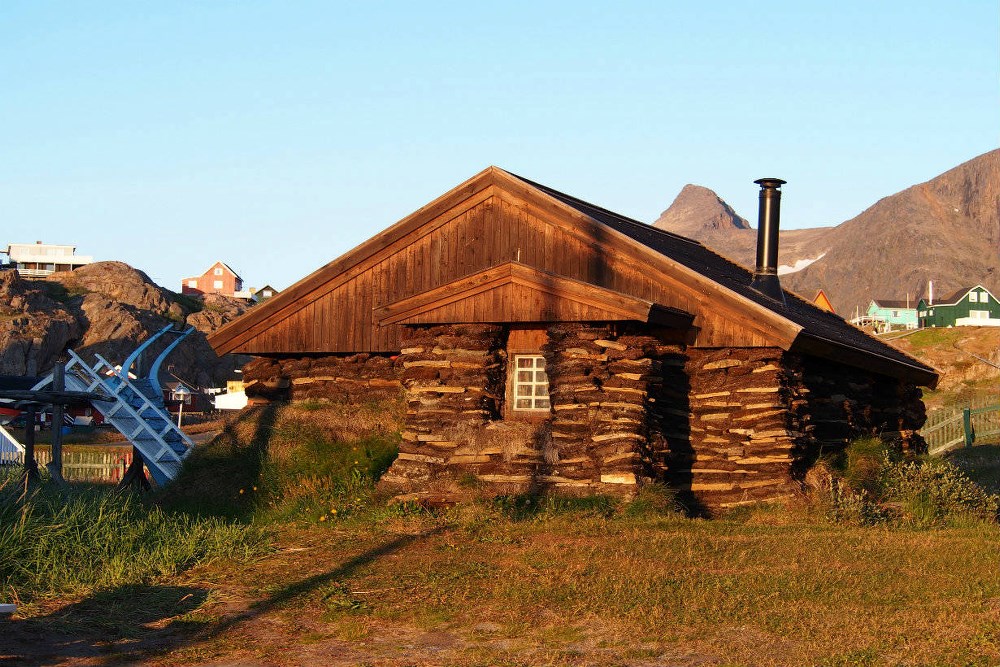The Turf House 1993
The Turf House (B-1486) is a reconstruction (built in 1993) of the type of turf house typical for Sisimiut 100 years ago.
The exhibition on the first floor of the Colonial Manager’s House shows a number of hundred-year-old scale models of a turf house and summer tent, created by Greenlandic artist Gerth Lyberth.
Today, the ruins of many different types of turf buildings are visible along the coastline around Sisimiut. As the construction and layout of the Inuit turf house developed over time, it is possible to date the ruins. At the start of the colonial era, the native Greenlandic population often lived in large communal houses in which several families would live together.
During the early phases of the Christian mission in Greenland, people were urged to move into smaller houses, as the missionaries did not approve of the goings-on when the lights were out during the long winter months. The turf house at Sisimiut Museum is a reconstruction of one such smaller house, which could only house two families. The house is decorated to represent a typical early 20th-century Greenlandic house and is very popular amongst the children of Sisimiut, who like to practice on the kayak board or take a nap on the sleeping platform as part of a nursery outing.








